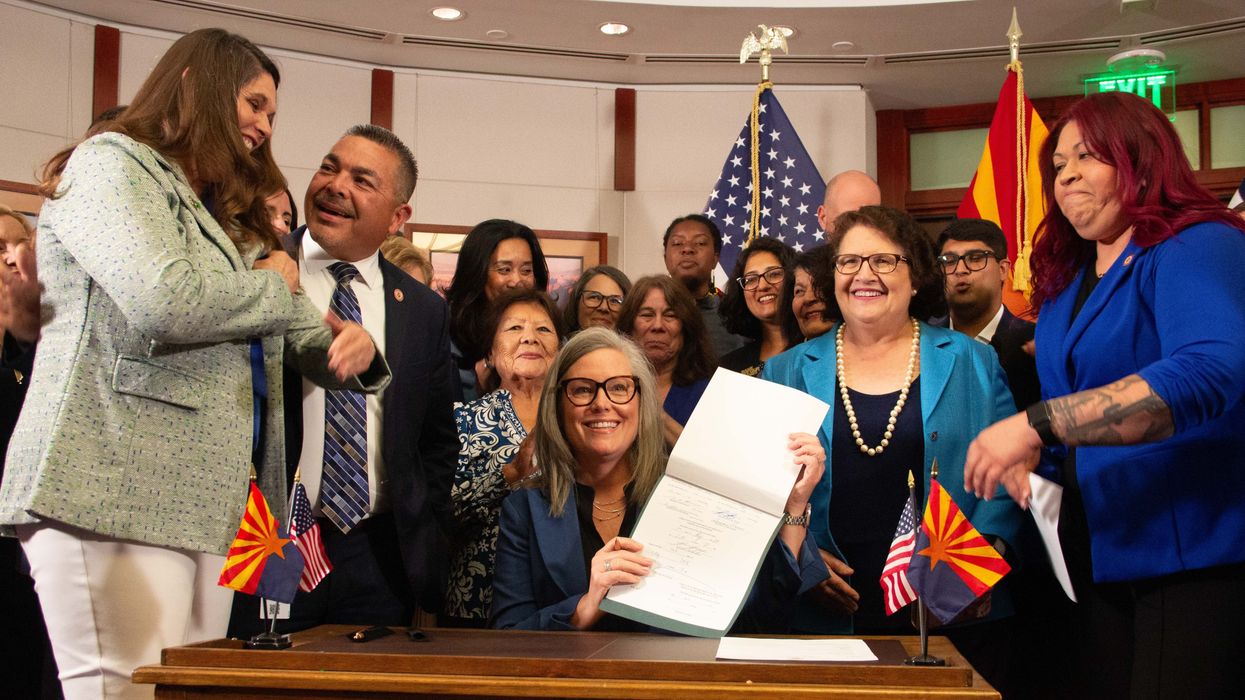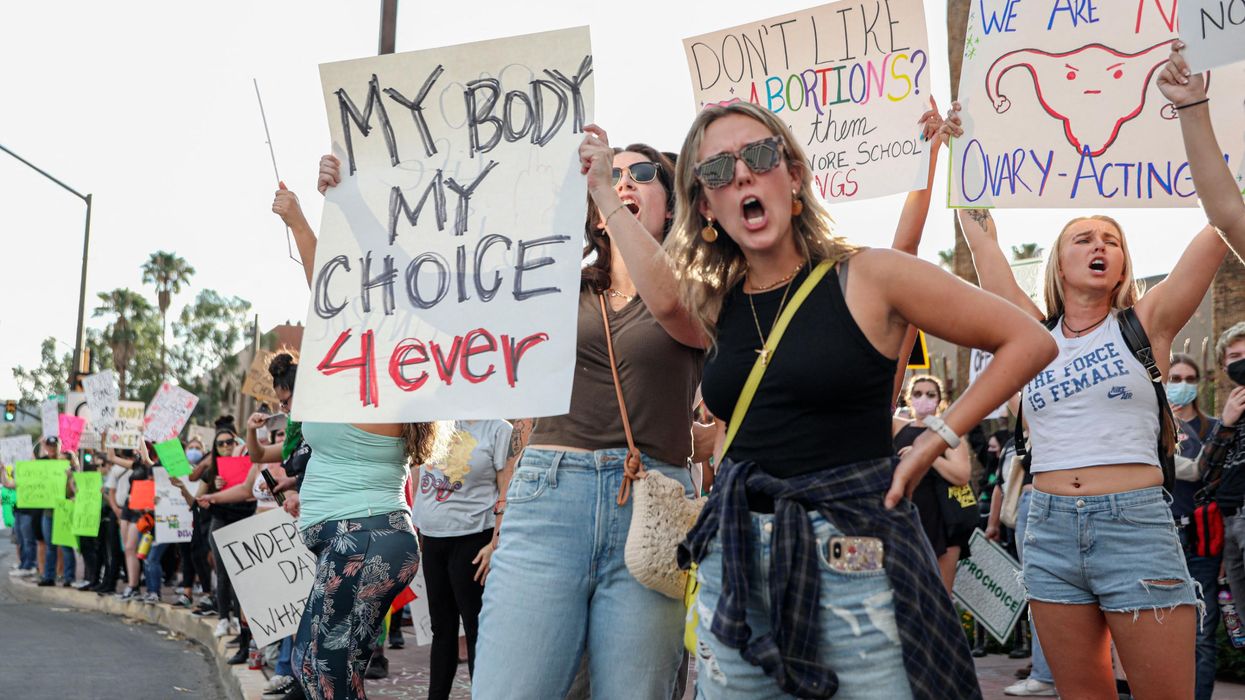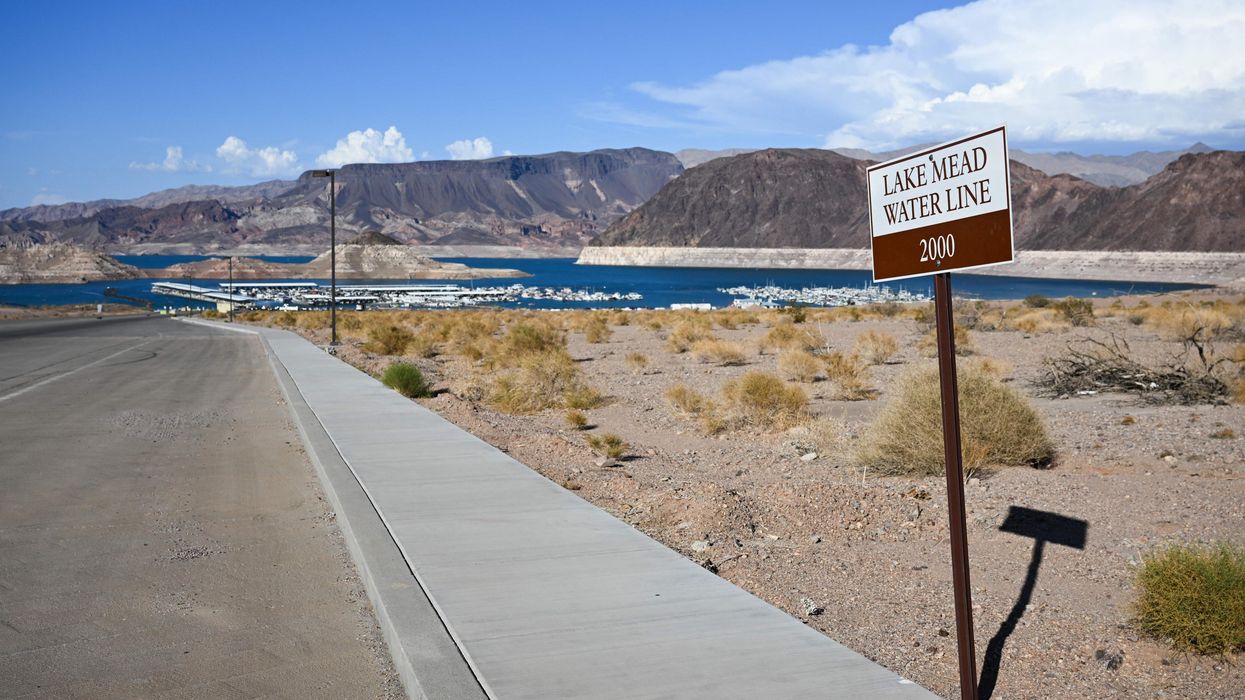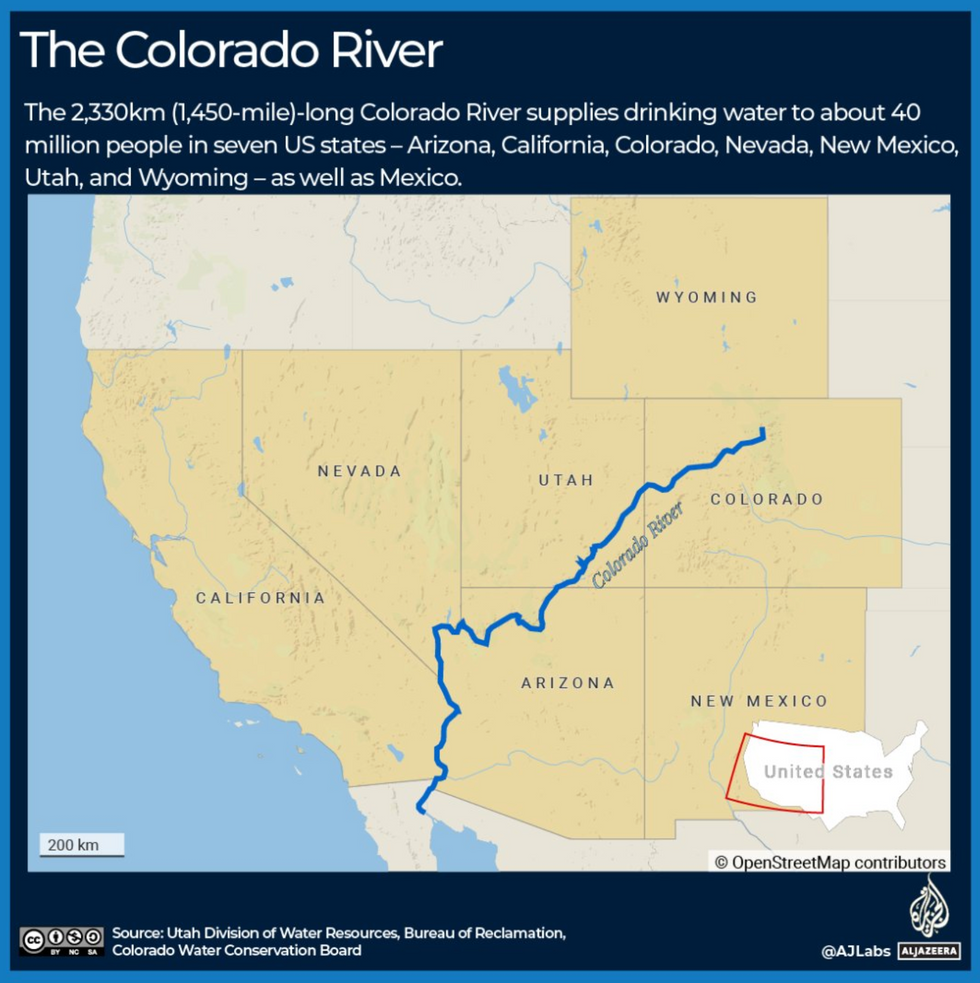As Hobbs Signs Repeal, Arizonans Push Abortion Rights Ballot Measure
"We cannot afford to celebrate or lose momentum. The threat to our reproductive freedom is as immediate today as it ever was," said the campaign behind the ballot initiative.
While Democratic Arizona Gov. Katie Hobbs on Thursday signed legislation repealing an 1864 abortion ban, reproductive rights advocates in the state reiterated that fuller freedom over family planning requires passing a November ballot measure.
In response to an
Arizona Republic opinion piece noting that there is no emergency clause in House Bill 2677, the law repealing the ban, "which means it won't go off the books until 90 days after the Legislature adjourns," Arizona for Abortion Access stressed that "Arizonans will still be living under a law that denies us the right to make decisions about our own health."
"We cannot afford to celebrate or lose momentum. The threat to our reproductive freedom is as immediate today as it ever was," the campaign behind the ballot initiative said, adding that only passing the Arizona Abortion Access Act "changes that for good."
The Arizona Abortion Access Act is a proposed state constitutional amendment that would prohibit many limits on abortions before fetal viability and safeguard access to care after viability to protect the life or physical or mental health of the patient. Arizonans were fighting for it even before the state Supreme Court reinstated the 160-year-old ban.
Even Hobbs recognized that the battle for reproductive freedom is far from over, saying Thursday that "today, we should not rest, but we should recommit to protecting women's bodily autonomy, their ability to make their own healthcare decisions, and the ability to control their lives."
"Let me be clear: I will do everything in my power to protect our reproductive freedoms, because I trust women to make the decisions that are best for them, and know politicians do not belong in the doctor's office," the Democrat pledged.
Her signature came just a day after the Arizona Senate approved H.B. 2677, following its state House passage last month. In both cases, a couple of Republican lawmakers voted with Democrats to advance the legislation—defying not only party members in the state but a national GOP that is hellbent on ending access to abortion care.
Democratic Arizona Attorney General Kris Mayes said Wednesday that the Senate vote "to repeal the draconian 1864 abortion ban is a win for freedom in our state" and she was looking forward to Hobbs signing the bill.
"However, without an emergency clause that would allow the repeal to take effect immediately, the people of Arizona may still be subjected to the near-total abortion ban for a period of time this year," Mayes acknowledged. "Rest assured, my office is exploring every option available to prevent this outrageous 160-year-old law from ever taking effect."
Law Dork's Chris Geidner pointed out that "on Tuesday—though technically unrelated—Mayes' office asked the Arizona Supreme Court to stay the issuance of the mandate in the case holding the near-total ban enforceable."
According to Geidner:
If granted, that would push the issuance of the mandate to July 25—90 days beyond the date when the Arizona Supreme Court denied Mayes' request for reconsideration—which would then block enforcement to at least 45 days beyond that, to September 8.
At that point, the repeal law passed on Wednesday likely will have gone into effect—meaning that the 15-week ban would remain the applicable law throughout this entire time—and the expected vote on the proposed constitutional amendment will be less than two months away.
Planned Parenthood Arizona took similar action after the Senate vote on Wednesday. The group's CEO, Angela Florez, explained that "we have said all along that we will use every possible avenue to safeguard essential care for our patients and all Arizonans, and that's exactly what we're doing with today's motion."
"While anti-abortion extremists in the state Legislature will continue to do everything in their power to undermine Arizonans' freedom and criminalize essential healthcare, Planned Parenthood Arizona is taking action to prevent a harmful total ban on abortion from taking effect in our state," Florez continued. "The court's April 9 ruling was both tragic and wrong, but it rested on trying to discern legislative intent. The Legislature has now spoken and clearly does not want the 1864 ban to be enforced."
"We hope the court stays true to its word and respects this long-overdue legislative action, by quickly granting our motion to end the uncertainty over the future of abortion in Arizona," added Florez, whose group supports the ballot measure.



